Shelley v. Bodian
PLAINTIFFS COMMENCED this legal malpractice action against defendants Bodian, an attorney, and the law firm of Mintz Levin alleging Bodian was too pre-occupied with his own lateral movement from his prior firm to Mintz Levin to file a lawsuit on plaintiff Shelley's behalf. Bodian began representing plaintiff Joseph Shelley in a dispute with his cousin James Shelley in 1998. That action was dismissed on statute of limitations grounds and plaintiff commenced this suit claiming Bodain failed to timely commence a lawsuit on his behalf because he was too busy transitioning between firms. Defendant argued that plaintiff's suit to recover amounts owed to pension plans would have been uncollectible. The court rejected defendants' argument as irrelevant stating that in a malpractice action plaintiff was only required to show he suffered damages, and not collectibility of a successful judgment. Therefore, the court denied defendants' motions for summary judgment allowing plaintiff's lawsuit to go forward.
FULL DECISION:
Shelley v. Bodian, 602254/05
Decided: August 1, 2008
Justice Emily Jane Goodman
NEW YORK COUNTY, Supreme Court, Justice Goodman
This is a legal malpractice action by plaintiffs Joseph P. Shelley (Joe Shelley), individually and on behalf of Walter M. Buchroeder & Son Profit Sharing Plan (WMB Plan), Institutional Equipment Sales Corporation Profit Sharing Plan (IES Plan) and Kevin Equipment Profit Sharing Plan (KEP Plan; the three pension plans, collectively, the Plans), against defendants Robert I. Bodian (Bodian) and the law firm of Mintz, Levin, Cohn, Ferris, Glovsky and Popeo, P.C. (Mintz Levin). The complaint1 alleges various causes of action, many of which have been disposed of by a prior order of this court, dated March 6, 2007.
In the instant motion, plaintiffs seek (1) summary judgment as to the first cause of action of the complaint (i.e. defendants allegedly committed malpractice by failing to timely commence an action on behalf of plaintiffs against third parties, to wit, the defendants in the "Dixon Action," as defined below), and (2) an order granting plaintiffs leave to serve their Second Amended Complaint to add a cause of action that alleges over-billing by defendants. Defendants oppose the motion and cross move for summary judgment dismissing the first cause of action and the third cause of action (i.e. defendants allegedly committed malpractice by failing to advise the court of certain payments made by the parties in the Dixon Action that would have tolled the statute of limitations). For the reasons stated herein, the reliefs sought in the motion and the cross motion are denied.
Background
In May 1998, Joe Shelley met Bodian when the latter was affiliated with Bodian & Eames, LLP (B&E).2 Bodian was retained in connection with representing Joe Shelley's partial ownership interest in Metropolitan Electric Manufacturing Co. (MEMCO), a company that made construction equipment, and the disputes he had with members of his family who owned MEMCO's remaining interest. Ownership of MEMCO was passed from Patrick Shelley to his two sons, James Shelley Sr. (Jim Shelley, Joe Shelley's uncle) and Joseph Shelley Sr. (Joe Shelley's father), and then to their descendants (respectively, the Jim Shelley Group and the Joe Shelley Group). Specifically, Bodian was hired to file a motion to compel MEMCO to retain counsel to defend itself in an action commenced by Broadway Equities, an entity controlled by the Jim Shelley Group, which allegedly loaned substantial money to MEMCO. Any default judgment against MEMCO would have purportedly given the Jim Shelley Group control over MEMCO, at the expense of Joe Shelley Group3 (the Broadway Action). That motion was granted.
Besides the Broadway Action, Bodian represented plaintiffs in their action against Dixon Equities and Madeleine Shelley, executrix of the estate of Jim Shelley, in connection with the loans that were made by the Plans to Dixon Equities (the Dixon Action, and defendants therein, the Dixon Action Defendants). Dixon Equities and an entity named Dixon Realty (collectively, the Dixon Entities) were formed in or about 1988-1989 by the Joe Shelley and Jim Shelley Groups. As discussed below, although there is a dispute as to whether Joe Shelley has any ownership interest in Dixon Equities, it is undisputed that Dixon Realty is owned jointly by the Joe Shelley and Jim Shelley Groups. The purported purpose of the Dixon Entities and the related loan transactions, as described below, was to minimize taxes payable by the Plans, and thus the beneficiaries of the Plans. With respect to the loan transactions, the Plans loaned monies to Dixon Equities at 14 percent interest; Dixon Equities then loaned the proceeds thereof to Dixon Realty at 14 percent interest; and Dixon Realty then used the loan proceeds to, among other things, buy the building where MEMCO conducted business. Partial repayments of the loans, which are characterized by plaintiffs as revolving lines of credit, have been made by Dixon Equities.
Joe Shelley asserts that in March 1999, he provided Bodian with documentation that established the outstanding debts owed by Dixon Equities to the Plans, but Bodian did not commence the Dixon Action to recover the indebtedness until May 2000. Joe Shelley asserts that Bodian failed to timely commence the Dixon Action because Bodian appeared to have been more involved in his personal business associations (i.e. transition or move between law firms) than client matters. The Dixon Action was dismissed by the Supreme Court, Nassau County, by order of Justice Bucaria dated November 13, 2001, on the basis that it was time-barred. The Appellate Division of the Second Department affirmed the dismissal, by order dated December 23, 2002. In April 2003, Bodian and Mintz Levin obtained an order of the bankruptcy court authorizing them to withdraw as counsel to Joe Shelley and his affiliated entities in MEMCO's chapter 11 case.
Thereafter, plaintiffs commenced this malpractice action against Bodian, Mintz Levin, B&E and O'Sullivan in October 2005. By stipulation, B&E and O'Sullivan are no longer defendants in this action. The complaint against defendants asserts fourteen causes of action, many of which have been adjudicated by this court's order dated March 6, 2007. Plaintiffs' instant motion seeks summary judgment on the complaint's first cause of action, i.e. the malpractice claim against defendants for failing to timely commence the Dixon Action. Defendants cross move for summary judgment dismissing the first and third causes of action.
Applicable Legal Standards
In stating the standards for granting or denying a summary judgment motion pursuant to CPLR 3212, the Court of Appeals noted in Alvarez v. Prospect Hospital (68 NY2d 320, 324 [1986]):
As we have stated frequently, the proponent of a summary judgment motion must make a prima facie showing of entitlement to judgment as a matter of law, tendering sufficient evidence to demonstrate the absence of any material issues of fact. Failure to make such . . . showing requires a denial of the motion, regardless of the sufficiency of the opposing papers. Once this showing has been made, however, the burden shifts to the party opposing the motion for summary judgment to produce evidentiary support in admissible form sufficient to establish the existence of material issues of fact which require a trial of the action [internal citations omitted].
Adhering to the Court of Appeals' guidance, the lower courts uniformly scrutinize motions for summary judgment, as well as the facts and circumstances of each case, to determine whether relief should be granted or denied. Giandana v. Providence Rest Nursing Home, 32 AD3d 126, 148 (1st Dept 2006) (because summary judgment "deprives the litigant of his day in court, it is considered a drastic remedy which should only be employed when there is no doubt as to the absence of triable issues") (citations omitted); Martin v. Briggs, 235 AD2d 192, 196 (1st Dept 1997) (in considering a summary judgment motion, "evidence should be analyzed in the light most favorable to the party opposing the motion") (citations omitted). However, general allegations of a conclusory nature unsupported by competent evidence are insufficient to defeat a summary judgment motion. Alvarez, 68 NY2d at 324-325. Further, documentary evidence must establish conclusively a defense to a claim as a matter of law, before a court may dismiss the claim pursuant to CPLR 3211 (a) (1). Arnav Indus., Inc. Retirement Trust v. Brown, Raysman, Millstein, Felder & Steiner, LLP, 96 NY2d 300 (2001); Weil, Gotshal & Manges, LLP v. Fashion Boutique of Short Hills, Inc., 10 AD3d 267 (1st Dept 2004).
Discussions
To properly plead a legal malpractice claim, a plaintiff must allege: (1) the attorney's negligence; (2) the negligence was the proximate cause of plaintiff's loss; and (3) actual damages sustained by plaintiff. Leder v. Spiegel, 31 AD3d 266 (1st Dept 2006); Pellegrino v. File, 291 AD2d 60 (1st Dept 2002).
In this case, the complaint's first cause of action asserts that defendants' failure to timely commence the Dixon Action to recover funds owed by the Dixon Action Defendants to plaintiffs, which resulted in an outright court dismissal of the Action based on statute of limitations, was "a deviation from the accepted standard of care in the community and constituted negligence and malpractice." Complaint, ¶15. Plaintiffs assert that due to such negligence, they have suffered monetary damages in the sum of $1,201,863.67 (the outstanding loan amount), plus interest at 14 percent. Complaint, ¶16-17. In response, defendants contend that plaintiffs are not entitled to summary judgment with respect to the first cause of action because, among other things: (A) the Dixon Action was already time-barred when plaintiffs retained Bodian; (B) even if the Dixon Action was not time-barred, the Dixon Action Defendants raised many affirmative defenses that would have precluded plaintiffs from prevailing in that Action; and (C) even if plaintiffs were to prevail in the Dixon Action, any judgment obtained would not be collectible.
A. Statute of Limitations
Under CPLR 213, the limitations period for commencing an action on a loan is six years. In the instant case, the loans to Dixon Equities were made by the Plans from 1989-1991, and the Plans demanded repayment in 1999, but did not commence the Dixon Action until May 2000. Therefore, the Dixon Action commenced in 2000 was time-barred by the six year limitations period, unless such period was tolled.
Under the General Obligations Law, GOL §17-101 provides that the limitations period to bring an action on a debt can be tolled if the debtor, in writing, acknowledges or promises to repay the debt. Under long-standing common law, "if part payment of a debt otherwise outlawed by the Statute of Limitations is made under circumstances from which a promise to honor the obligation may be inferred, it will be effective to make the time limited for bringing an action start anew from the time of such payment." Roth v. Michelson, 55 NY2d 278, 281 (1982); Saljanin v. Vuksanaj, 284 AD2d 525, 526 (2nd Dept. 2001) (an action commenced in July 1997 to recover on a debt made in December 1990 was not untimely, because defendant's partial payment of the debt in April 1992 restarted the running of the six year period).
Plaintiffs contend that Dixon Equities made partial payments, by checks, on the loans until 1995, and the payments tolled the running of the limitations period. Plaintiffs also contend that the court dismissed the Dixon Action on statute of limitations grounds because it relied on an affidavit that was purportedly executed by Joe Shelley, but was actually forged by defendants, where the affidavit incorrectly stated that Dixon Equities made partial debt repayments only through 1993.4 A copy of the allegedly forged affidavit, dated September 20, 2001, is annexed as "Exhibit A" to the Joe Shelley Affidavit dated February 15, 2008;5 and copies of the checks issued to the Plans by Dixon Equities in 1994 and 1995 (the checks were signed by Joe Shelley, which stated therein that they were "interest" and/or "return of principal" payments) are annexed as "Exhibit I" to the Joe Shelley Affidavit. Plaintiffs also contend that had Bodian asked to see these checks (which were readily available to him) and had presented them to the Dixon Action court, instead of just using the financial ledger sheet prepared by Mark Stern, the accountant of Dixon Equities who summarized in a financial ledger sheet its cash receipts and disbursements, and with whom Bodian had spoken and was available for any further questions, the court would have considered all loan repayment documentation made subsequent to 1993 with respect to the tolling of the limitations period. Plaintiffs contend that Bodian's failure to do so, which is asserted as the complaint's third cause of action, resulted in the summary dismissal of the Dixon Action.6
Defendants do not specifically deny the serious allegation that the affidavit was forged; they merely dismiss it as a "red-herring claim." Defendants' Reply, p. 11, fn. 3. Nor do they contend that interest and/or principal payment on an outstanding loan cannot toll the limitations period. Instead, they argue, inter alia, that (1) the loans were "illusory" or that they were only "investments" or "transfers," and thus there were no loans to recover in the Dixon Action; (2) the purported loans were made by different pension plans via 33 checks, and each was a distinct loan (as opposed to a revolving line of credit, as contended by plaintiffs) with a different limitations period; (3) the limitations period was not tolled, because even if the loans were reflected in the books and records (including tax returns) of Dixon Equities, they do not constitute an absolute and unqualified acknowledgment of debts within the meaning of GOL §17-101; (4) certain tax records do not support plaintiffs' claims that bona fide loans were made because the records were unsigned, undated, the loans were not identified on any schedule and the line items for long term liabilities were left blank; and (5) the repayment checks are insufficient to toll the statute because they were not signed by Dixon Equities, and GOL §17-101 requires an acknowledgment of a debt be signed by the party to be charged (i.e. the debtor), but Joe Shelley is a creditor and has not demonstrated that he is an authorized agent or signatory of Dixon Equities.
Defendants' "illusory" or non-loan argument is unpersuasive. The Dixon Action courts in their decisions, and Bodian in his capacity as plaintiffs' counsel in the Dixon Action, as well as the Dixon Action Defendants, had referred to these inter-company transfers or advances as loans, and had applied the six year limitations period for loans in determining timeliness of the Dixon Action. However, plaintiffs have not provided evidence demonstrating which Plans made which loans, the amounts of the each of the loans, the relevant dates of the loans, the amounts outstanding on each of the loans, etc. In fact, nowhere in plaintiffs' moving papers is there any explanation regarding how the amount sought was calculated.7 Accordingly, plaintiffs are not entitled to summary judgment for this reason alone, among others.
Plaintiffs are also not entitled to summary judgment based upon their argument that the debt was revived under GOL §17-101. Under that statute, it must be shown that there was a payment of a portion of an admitted debt, accompanied by circumstances amounting to an absolute and unqualified acknowledgment by the debtor of more being due, from which a promise may be inferred to pay the remainder. See Piccolino v. Massa 33 A.D.2d 643 (4th Dept 1969); see also Banco Do Brasil v. Antingua, 268 AD2d 75 (1st Dept 2000] [evidence clearly conveyed and was consistent with intent to pay a past-due debt]). Circumstances of a partial repayment for a debt may be proven by extrinsic evidence, such as the books and records of the debtor, admission of the debtor, and testimony of persons having direct knowledge of the circumstances of debt repayment. See Education Resources Institute, Inc. v. Piazza, 17 AD3d 513, 514 (2nd Dept 2005); Bernstein v. Kaplan, 67 AD2d 897 (2nd Dept 1979). See also Chase Manhattan Bank v. Polimeni, 258 AD2d 361, 361 (1st Dept 1999)(defendant's own financial statements, which carried the debts owed to plaintiff, constituted "acknowledgment or promise" within the meaning of GOL §17-101); Daewoo Int'l (American) Corp. Creditor Trust v. SSTS America Corp., 2004 WL 1488511 at *4 (SD NY July 2, 2004)(same); but see Skiadas v. Terovolas, 271 AD2d 521, 521 (2nd Dept 2000)("the mere fact that the debt was carried on the defendants' books and tax returns would not, in and of itself, constitute the required acknowledgment").
Plaintiffs have failed to establish that Joe Shelley made an "acknowledgment or promise" of debt repayment on behalf of Dixon Equities when he signed certain checks after the expiration of the statute of limitations. In opposition to defendants' argument that Joe Shelley failed to present proof that he was an authorized agent for Dixon Equities and that he was "the party to be charged" Joe Shelley states:
At James Shelley's request, and by agreement of the parties, your deponent acted as the agent of Dixon Equities to sign checks on its behalf. Your deponent signed checks, as Dixon Equities' agent, not only for payments for the loans in which your deponent had an interest, but for two other plans in which your deponent had no interest at that time. The books and records were maintained within your deponent's office and your deponent had regular contact with the accountant for Dixon Equities. Given the totality of the circumstances and James Shelley's failing health, this was the most expeditious and expedient way to proceed. At James Shelley's request, your deponent was designated as a signatory on the Dixon Equities account.8
Even crediting Joe Shelley's statement that he was authorized by James Shelley to sign checks generally from the Dixon Equities account, it is the trier of fact who must determine whether the checks evidence the intent of Dixon Equities to recognize and repay the debt, as opposed to the intent of Joe Shelley, who was, by his own admission, with respect to at least one of the pension plans, also a creditor of Dixon Equities. See e.g., Chemical Bank v. Cakepan, Inc., 72 AD2d 515 [1st Dept 1979] [trial court reversed because issue of fact existed for trial as to whether individual who sent payments after the expiration of the statute of limitations did so on his own behalf or as agent for the corporate maker]). Moreover, the evidence submitted does not, as a matter of law, establish that the payments were made with respect to specific loans, and Joe Shelley's affidavit, dated February 15, 2008, which was not submitted with the moving papers, continues to lump together the loans.9
B. The Affirmative Defenses
Alternatively, defendants argue that, even assuming the limitations period had not expired, the affirmative defenses raised by the Dixon Action Defendants would have barred any recovery by plaintiffs in that Action. In effect, defendants argue that, in a legal malpractice action, merely proving that the defendant-attorney had acted negligently in failing to timely commence an action would be insufficient to support a summary judgment motion by the plaintiff-client, and that plaintiff must also show that it would have prevailed in the underlying action as well. See LaRusso v. Katz, 30 AD3d 240, 243 (1st Dept 2006).
The various affirmative defenses raised by the Dixon Action Defendants included, among other allegations, that Joe Shelley had complete control of the Plans and the Dixon Entities; that he devised the loan transactions to usurp Dixon Realty's assets for himself; and that the loans were devised to circumvent "Prohibited Transactions" in Internal Revenue Code §4975 (c) (11) (D), and were usurious and thus, voidable. Notably, the Dixon Action court did not address these defenses, because the Dixon Action was dismissed solely on the grounds of statute of limitations. It is also noteworthy that such defenses were refuted or opposed to, in whole or in part, in pleadings filed by Bodian, as counsel for plaintiffs in the Dixon Action. See Bodian Affidavit, 10/4/07, Exhibit J, Plaintiffs' Memorandum of Law in opposition to Dixon Action Defendants' motion for summary judgment. Furthermore, defendants in this case have not explained why, with respect to the loans made to Dixon Equities, an interest rate of 14 percent is usurious.10 Under GOL §5-521, an entity, such as Dixon Equities, may not interpose the defense of usury except in cases of criminal usury under Penal Law §190.40, but defendants do not allege that the loans to Dixon Equities constituted criminal usury. See e.g., Intima-Eighteen, Inc. v. A.H. Schreiber Co., Inc., 172 AD2d 456 (1st Dept 1991); Tides Edge Corp. v. Central Fed. Savings, 151 AD2d 741 (2nd Dept 1989).
At best, these affirmative defenses might raise triable issues of fact, but are insufficient to support defendants' cross motion for summary judgment dismissing the malpractice claim as a matter of law. Jennings v. Schilling, 202 AD2d 638 (2nd Dept 1994) (in a summary judgment motion, moving defendants have the burden of presenting evidentiary facts in admissible form to show there is merit to their affirmative defenses). Thus, defendants' cross motion for summary judgment is denied for this reason as well.
C. Collectibility of Judgment
Finally, defendants argue that even assuming plaintiffs were successful in the Dixon Action, any judgment obtained would not have been collectible, because Joe Shelley had acknowledged in depositions conducted in that Action that the Dixon Entities did not have funds to repay the loans. Defendants' Brief, p. 21.
Defendants' argument is irrelevant because in a malpractice action plaintiff is only required to show he suffered damages, and not collectibility of a successful judgment. Rather, it is defendants who bear the burden, and, have not met it. Lindenman v. Kreitzer, 7 AD3d 30, 35 (1st Dept 2004). Joe Shelley states in his affidavit that: "While Dixon Equities may not have sufficient cash flow to repay the loan, [it] had a valid and bona fide claim against Dixon Realty which owned real property with sufficient equity to repay those loans." Joe Shelley Affidavit, 2/15/08, ¶7. Joe Shelley further states that Jim Shelley was a guarantor on some of the loans made to Dixon Equities, that Jim Shelley's estate was another defendant in the Dixon Action, and that the estate's probate filing showed there were sufficient assets to satisfy the judgment obtained in the Dixon Action, even if Dixon Equities did not have cash flow to repay the loans. Id., Exhibit L, copy of Jim Shelley's 1996 estate tax return.
D. Motion For Leave To Serve The Second Amended Complaint
Plaintiffs' motion also seeks leave of court to serve the Second Amended Complaint, which proposes to add a new cause of action (another malpractice claim designated therein as the Ninth Cause of Action) seeking to recover "unnecessary and duplicate" legal fees charged by defendants and by Bodian in particular. More specifically, plaintiffs allege that Bodian had failed to advise them that, by compromising the then outstanding legal bill of $14,475.03 of O'Sullivan where Bodian was a partner and by paying the compromised amount of $10,000.00 based on Bodian's advice given in September 2001, plaintiffs had waived the right to contest the excessive fees previously charged by O'Sullivan-Bodian, and paid by plaintiffs totaling $224,112.67. Plaintiffs allege that Bodian committed malpractice in September 2001, by failing to advise plaintiffs of the effect of compromising and paying the O'Sullivan bill.
Under CPLR 214-6, the limitations period to commence a legal malpractice action is three years, regardless of whether the underlying theory is based on contract or tort. Pursuant to the doctrine of continuous legal representation, the limitations period is tolled until representation has been completed. Shumsky v. Eisenstein, 96 NY2d 164 (2001). As explained above, because Bodian withdrew as counsel for plaintiffs in April 2003, the limitations period to bring an action for a malpractice claim was tolled until April 2006.
The complaint in this case was filed on October 25, 2005, and the defendants at that time included O'Sullivan, which, as noted above, is no longer a defendant pursuant to a stipulation. The Second Amended Complaint, dated September 9, 2006, seeks to add the instant Ninth Cause of Action against defendants. By order dated March 8, 2007, this court denied plaintiffs' motion to amend the complaint, but with leave to renew, because they failed to submit an affidavit of merit from someone with personal knowledge. In the instant motion, which is supported by the Joe Shelley Affidavit, plaintiffs argue that the proposed amendment is proper under CPLR 203 (e), which deems a cause of action asserted in an amended pleading to have been interposed at the time of the original pleading, if it relates to the same claim or transactions embraced in the original pleading. Caffaro v. Trayna, 35 NY2d 245, 253 (1974) (excluded are cases where "the original pleading does not give notice of the transactions . . . to be proved pursuant to the amended pleading").
The original complaint in this case made absolutely no reference to plaintiffs' compromise and payment of the O'Sullivan bill or to any advice that Bodian might have given in connection therewith that could constitute legal malpractice. Thus, the Second Amended Complaint seeking to add this "new" cause of action, (Attorney's Affirmation of Steven Legum, 7/16/07, ¶20), does not give notice or relate to the same claim or transactions embraced in the original complaint. See e.g., Martin v. Edwards Laboratories, Division of American Hospital Supply Corp., 60 NY2d 417, 429 (1983) (motion to amend denied because the original complaint did not sufficiently state the circumstances which would serve as adequate notice of the claim, and amendment was not saved by the relation back provision of CPLR 203 (e)); see also Norte & Co. v. The New York And Harlem Railroad Co., 222 AD2d 357 (1st Dept 1995) (upholding court's exercise of discretion in denying leave to amend, when questions could be raised as to the sufficiency of the proposed amendment, and permitting amendment would lead to needless litigation).
Based on the foregoing, plaintiffs' motion seeking leave of court to serve the Second Amended Complaint is denied. In such regard, it is unnecessary to address the issues raised by the parties as to whether the doctrines of "account stated" and/or "voluntary payment" would bar the proposed amendment.
Accordingly, it is
ORDERED that plaintiffs' motion for summary judgment on their first cause of action against defendants is denied; and it is further
ORDERED that plaintiffs' motion seeking leave of court to serve the Second Amended Complaint upon defendants is denied; and it is further
ORDERED that defendants' cross motion for summary judgment dismissing the first cause of action and the third cause of action against defendants is denied.
This constitutes the Decision and Order of the court.
1. The original complaint was amended by plaintiffs as a matter of right. The complaint, as amended, will be referred to hereinafter simply as the complaint, unless otherwise indicated.
2. B&E ceased doing business in September 1999, and Bodian joined O'Sullivan Graev & Karabell, LLP (O'Sullivan). Bodian remained with O'Sullivan until March 2000, when he moved to, and became a partner of, Mintz Levin, his current firm.
3. Members of the Joe Shelley Group include Gerald Shelley (Joe Shelley' brother) and his children. In February 2000, Gerald Shelley and his children transferred their interests in MEMCO to Joe Shelley and his children, as part of the settlement of litigation between Gerald Shelley and Joe Shelley.
4. Notably, the trial court stated in its November 13, 2001 decision that: "All payments by defendant [Dixon Equities] - both interest and principal - ceased in 1993. This action was commenced on May 7, 2000 . . . This action is untimely."
5. Joe Shelley asserts that he did not find out the September 20, 2001 affidavit was forged until he was working with counsel, on October 9, 2007, to prepare responses to interrogatories in this action. He also asserts that he never saw the unauthorized affidavit until that date, and that the forged signature has been conclusively confirmed by a forensic handwriting expert, who has executed and submitted an affidavit to support this conclusion.
6. The appellate court held that, because the financial records were not contemporaneous but were reconstructed by the by the accountant, they did not acknowledge an existing debt.
7. The accountant's affidavit, which was not submitted with plaintiffs' moving papers, does not explain how the amount sought was calculated.
8. Although not raised by either party, some of Joe Shelley's statements may implicate CPLR §4519, known as the Dead Man's Statute. The statute is a rule of evidence that may limit trial testimony, but does not necessarily limit evidence which may be considered to oppose summary judgment (see Phillips v. Kantor & Co., 31 NY2d 307 [1972]). The court need not address this complex statute (which may be waived under certain circumstances), because even crediting Joe Shelley's entire statement, summary judgment to plaintiffs must be denied.
9. In its 30 page memorandum of law, defendants, in one line, contend that plaintiffs' motion for summary judgment should be denied because "Joe Shelly does not provide any basis, let alone documentation establishing that he indeed has authority to act on behalf of the Plans." However, in his Affidavit, sworn to February 15, 2008, Joe Shelley states that based upon Bodian's advice and recommendation, he "purchased an interest" in the IES Plan and the KEP Plan.
10. Defendants argue, without support, that the "effective interest rate on the loans from the Plans to Dixon Realty was 100 percent." Defendants' Brief, p. 20 (emphasis added). On the other hand, plaintiffs submitted an affidavit by Mark Stern, accountant for Dixon Equities and other Shelley family businesses, which states, among other things, that the loans were revolving lines of credit and were not usurious. Mark Stern Affidavit, 2/7/08, paragraphs 3 and 4. ¦
PLAINTIFFS COMMENCED this legal malpractice action against defendants Bodian, an attorney, and the law firm of Mintz Levin alleging Bodian was too pre-occupied with his own lateral movement from his prior firm to Mintz Levin to file a lawsuit on plaintiff Shelley's behalf. Bodian began representing plaintiff Joseph Shelley in a dispute with his cousin James Shelley in 1998. That action was dismissed on statute of limitations grounds and plaintiff commenced this suit claiming Bodain failed to timely commence a lawsuit on his behalf because he was too busy transitioning between firms. Defendant argued that plaintiff's suit to recover amounts owed to pension plans would have been uncollectible. The court rejected defendants' argument as irrelevant stating that in a malpractice action plaintiff was only required to show he suffered damages, and not collectibility of a successful judgment. Therefore, the court denied defendants' motions for summary judgment allowing plaintiff's lawsuit to go forward.
FULL DECISION:
Shelley v. Bodian, 602254/05
Decided: August 1, 2008
Justice Emily Jane Goodman
NEW YORK COUNTY, Supreme Court, Justice Goodman
This is a legal malpractice action by plaintiffs Joseph P. Shelley (Joe Shelley), individually and on behalf of Walter M. Buchroeder & Son Profit Sharing Plan (WMB Plan), Institutional Equipment Sales Corporation Profit Sharing Plan (IES Plan) and Kevin Equipment Profit Sharing Plan (KEP Plan; the three pension plans, collectively, the Plans), against defendants Robert I. Bodian (Bodian) and the law firm of Mintz, Levin, Cohn, Ferris, Glovsky and Popeo, P.C. (Mintz Levin). The complaint1 alleges various causes of action, many of which have been disposed of by a prior order of this court, dated March 6, 2007.
In the instant motion, plaintiffs seek (1) summary judgment as to the first cause of action of the complaint (i.e. defendants allegedly committed malpractice by failing to timely commence an action on behalf of plaintiffs against third parties, to wit, the defendants in the "Dixon Action," as defined below), and (2) an order granting plaintiffs leave to serve their Second Amended Complaint to add a cause of action that alleges over-billing by defendants. Defendants oppose the motion and cross move for summary judgment dismissing the first cause of action and the third cause of action (i.e. defendants allegedly committed malpractice by failing to advise the court of certain payments made by the parties in the Dixon Action that would have tolled the statute of limitations). For the reasons stated herein, the reliefs sought in the motion and the cross motion are denied.
Background
In May 1998, Joe Shelley met Bodian when the latter was affiliated with Bodian & Eames, LLP (B&E).2 Bodian was retained in connection with representing Joe Shelley's partial ownership interest in Metropolitan Electric Manufacturing Co. (MEMCO), a company that made construction equipment, and the disputes he had with members of his family who owned MEMCO's remaining interest. Ownership of MEMCO was passed from Patrick Shelley to his two sons, James Shelley Sr. (Jim Shelley, Joe Shelley's uncle) and Joseph Shelley Sr. (Joe Shelley's father), and then to their descendants (respectively, the Jim Shelley Group and the Joe Shelley Group). Specifically, Bodian was hired to file a motion to compel MEMCO to retain counsel to defend itself in an action commenced by Broadway Equities, an entity controlled by the Jim Shelley Group, which allegedly loaned substantial money to MEMCO. Any default judgment against MEMCO would have purportedly given the Jim Shelley Group control over MEMCO, at the expense of Joe Shelley Group3 (the Broadway Action). That motion was granted.
Besides the Broadway Action, Bodian represented plaintiffs in their action against Dixon Equities and Madeleine Shelley, executrix of the estate of Jim Shelley, in connection with the loans that were made by the Plans to Dixon Equities (the Dixon Action, and defendants therein, the Dixon Action Defendants). Dixon Equities and an entity named Dixon Realty (collectively, the Dixon Entities) were formed in or about 1988-1989 by the Joe Shelley and Jim Shelley Groups. As discussed below, although there is a dispute as to whether Joe Shelley has any ownership interest in Dixon Equities, it is undisputed that Dixon Realty is owned jointly by the Joe Shelley and Jim Shelley Groups. The purported purpose of the Dixon Entities and the related loan transactions, as described below, was to minimize taxes payable by the Plans, and thus the beneficiaries of the Plans. With respect to the loan transactions, the Plans loaned monies to Dixon Equities at 14 percent interest; Dixon Equities then loaned the proceeds thereof to Dixon Realty at 14 percent interest; and Dixon Realty then used the loan proceeds to, among other things, buy the building where MEMCO conducted business. Partial repayments of the loans, which are characterized by plaintiffs as revolving lines of credit, have been made by Dixon Equities.
Joe Shelley asserts that in March 1999, he provided Bodian with documentation that established the outstanding debts owed by Dixon Equities to the Plans, but Bodian did not commence the Dixon Action to recover the indebtedness until May 2000. Joe Shelley asserts that Bodian failed to timely commence the Dixon Action because Bodian appeared to have been more involved in his personal business associations (i.e. transition or move between law firms) than client matters. The Dixon Action was dismissed by the Supreme Court, Nassau County, by order of Justice Bucaria dated November 13, 2001, on the basis that it was time-barred. The Appellate Division of the Second Department affirmed the dismissal, by order dated December 23, 2002. In April 2003, Bodian and Mintz Levin obtained an order of the bankruptcy court authorizing them to withdraw as counsel to Joe Shelley and his affiliated entities in MEMCO's chapter 11 case.
Thereafter, plaintiffs commenced this malpractice action against Bodian, Mintz Levin, B&E and O'Sullivan in October 2005. By stipulation, B&E and O'Sullivan are no longer defendants in this action. The complaint against defendants asserts fourteen causes of action, many of which have been adjudicated by this court's order dated March 6, 2007. Plaintiffs' instant motion seeks summary judgment on the complaint's first cause of action, i.e. the malpractice claim against defendants for failing to timely commence the Dixon Action. Defendants cross move for summary judgment dismissing the first and third causes of action.
Applicable Legal Standards
In stating the standards for granting or denying a summary judgment motion pursuant to CPLR 3212, the Court of Appeals noted in Alvarez v. Prospect Hospital (68 NY2d 320, 324 [1986]):
As we have stated frequently, the proponent of a summary judgment motion must make a prima facie showing of entitlement to judgment as a matter of law, tendering sufficient evidence to demonstrate the absence of any material issues of fact. Failure to make such . . . showing requires a denial of the motion, regardless of the sufficiency of the opposing papers. Once this showing has been made, however, the burden shifts to the party opposing the motion for summary judgment to produce evidentiary support in admissible form sufficient to establish the existence of material issues of fact which require a trial of the action [internal citations omitted].
Adhering to the Court of Appeals' guidance, the lower courts uniformly scrutinize motions for summary judgment, as well as the facts and circumstances of each case, to determine whether relief should be granted or denied. Giandana v. Providence Rest Nursing Home, 32 AD3d 126, 148 (1st Dept 2006) (because summary judgment "deprives the litigant of his day in court, it is considered a drastic remedy which should only be employed when there is no doubt as to the absence of triable issues") (citations omitted); Martin v. Briggs, 235 AD2d 192, 196 (1st Dept 1997) (in considering a summary judgment motion, "evidence should be analyzed in the light most favorable to the party opposing the motion") (citations omitted). However, general allegations of a conclusory nature unsupported by competent evidence are insufficient to defeat a summary judgment motion. Alvarez, 68 NY2d at 324-325. Further, documentary evidence must establish conclusively a defense to a claim as a matter of law, before a court may dismiss the claim pursuant to CPLR 3211 (a) (1). Arnav Indus., Inc. Retirement Trust v. Brown, Raysman, Millstein, Felder & Steiner, LLP, 96 NY2d 300 (2001); Weil, Gotshal & Manges, LLP v. Fashion Boutique of Short Hills, Inc., 10 AD3d 267 (1st Dept 2004).
Discussions
To properly plead a legal malpractice claim, a plaintiff must allege: (1) the attorney's negligence; (2) the negligence was the proximate cause of plaintiff's loss; and (3) actual damages sustained by plaintiff. Leder v. Spiegel, 31 AD3d 266 (1st Dept 2006); Pellegrino v. File, 291 AD2d 60 (1st Dept 2002).
In this case, the complaint's first cause of action asserts that defendants' failure to timely commence the Dixon Action to recover funds owed by the Dixon Action Defendants to plaintiffs, which resulted in an outright court dismissal of the Action based on statute of limitations, was "a deviation from the accepted standard of care in the community and constituted negligence and malpractice." Complaint, ¶15. Plaintiffs assert that due to such negligence, they have suffered monetary damages in the sum of $1,201,863.67 (the outstanding loan amount), plus interest at 14 percent. Complaint, ¶16-17. In response, defendants contend that plaintiffs are not entitled to summary judgment with respect to the first cause of action because, among other things: (A) the Dixon Action was already time-barred when plaintiffs retained Bodian; (B) even if the Dixon Action was not time-barred, the Dixon Action Defendants raised many affirmative defenses that would have precluded plaintiffs from prevailing in that Action; and (C) even if plaintiffs were to prevail in the Dixon Action, any judgment obtained would not be collectible.
A. Statute of Limitations
Under CPLR 213, the limitations period for commencing an action on a loan is six years. In the instant case, the loans to Dixon Equities were made by the Plans from 1989-1991, and the Plans demanded repayment in 1999, but did not commence the Dixon Action until May 2000. Therefore, the Dixon Action commenced in 2000 was time-barred by the six year limitations period, unless such period was tolled.
Under the General Obligations Law, GOL §17-101 provides that the limitations period to bring an action on a debt can be tolled if the debtor, in writing, acknowledges or promises to repay the debt. Under long-standing common law, "if part payment of a debt otherwise outlawed by the Statute of Limitations is made under circumstances from which a promise to honor the obligation may be inferred, it will be effective to make the time limited for bringing an action start anew from the time of such payment." Roth v. Michelson, 55 NY2d 278, 281 (1982); Saljanin v. Vuksanaj, 284 AD2d 525, 526 (2nd Dept. 2001) (an action commenced in July 1997 to recover on a debt made in December 1990 was not untimely, because defendant's partial payment of the debt in April 1992 restarted the running of the six year period).
Plaintiffs contend that Dixon Equities made partial payments, by checks, on the loans until 1995, and the payments tolled the running of the limitations period. Plaintiffs also contend that the court dismissed the Dixon Action on statute of limitations grounds because it relied on an affidavit that was purportedly executed by Joe Shelley, but was actually forged by defendants, where the affidavit incorrectly stated that Dixon Equities made partial debt repayments only through 1993.4 A copy of the allegedly forged affidavit, dated September 20, 2001, is annexed as "Exhibit A" to the Joe Shelley Affidavit dated February 15, 2008;5 and copies of the checks issued to the Plans by Dixon Equities in 1994 and 1995 (the checks were signed by Joe Shelley, which stated therein that they were "interest" and/or "return of principal" payments) are annexed as "Exhibit I" to the Joe Shelley Affidavit. Plaintiffs also contend that had Bodian asked to see these checks (which were readily available to him) and had presented them to the Dixon Action court, instead of just using the financial ledger sheet prepared by Mark Stern, the accountant of Dixon Equities who summarized in a financial ledger sheet its cash receipts and disbursements, and with whom Bodian had spoken and was available for any further questions, the court would have considered all loan repayment documentation made subsequent to 1993 with respect to the tolling of the limitations period. Plaintiffs contend that Bodian's failure to do so, which is asserted as the complaint's third cause of action, resulted in the summary dismissal of the Dixon Action.6
Defendants do not specifically deny the serious allegation that the affidavit was forged; they merely dismiss it as a "red-herring claim." Defendants' Reply, p. 11, fn. 3. Nor do they contend that interest and/or principal payment on an outstanding loan cannot toll the limitations period. Instead, they argue, inter alia, that (1) the loans were "illusory" or that they were only "investments" or "transfers," and thus there were no loans to recover in the Dixon Action; (2) the purported loans were made by different pension plans via 33 checks, and each was a distinct loan (as opposed to a revolving line of credit, as contended by plaintiffs) with a different limitations period; (3) the limitations period was not tolled, because even if the loans were reflected in the books and records (including tax returns) of Dixon Equities, they do not constitute an absolute and unqualified acknowledgment of debts within the meaning of GOL §17-101; (4) certain tax records do not support plaintiffs' claims that bona fide loans were made because the records were unsigned, undated, the loans were not identified on any schedule and the line items for long term liabilities were left blank; and (5) the repayment checks are insufficient to toll the statute because they were not signed by Dixon Equities, and GOL §17-101 requires an acknowledgment of a debt be signed by the party to be charged (i.e. the debtor), but Joe Shelley is a creditor and has not demonstrated that he is an authorized agent or signatory of Dixon Equities.
Defendants' "illusory" or non-loan argument is unpersuasive. The Dixon Action courts in their decisions, and Bodian in his capacity as plaintiffs' counsel in the Dixon Action, as well as the Dixon Action Defendants, had referred to these inter-company transfers or advances as loans, and had applied the six year limitations period for loans in determining timeliness of the Dixon Action. However, plaintiffs have not provided evidence demonstrating which Plans made which loans, the amounts of the each of the loans, the relevant dates of the loans, the amounts outstanding on each of the loans, etc. In fact, nowhere in plaintiffs' moving papers is there any explanation regarding how the amount sought was calculated.7 Accordingly, plaintiffs are not entitled to summary judgment for this reason alone, among others.
Plaintiffs are also not entitled to summary judgment based upon their argument that the debt was revived under GOL §17-101. Under that statute, it must be shown that there was a payment of a portion of an admitted debt, accompanied by circumstances amounting to an absolute and unqualified acknowledgment by the debtor of more being due, from which a promise may be inferred to pay the remainder. See Piccolino v. Massa 33 A.D.2d 643 (4th Dept 1969); see also Banco Do Brasil v. Antingua, 268 AD2d 75 (1st Dept 2000] [evidence clearly conveyed and was consistent with intent to pay a past-due debt]). Circumstances of a partial repayment for a debt may be proven by extrinsic evidence, such as the books and records of the debtor, admission of the debtor, and testimony of persons having direct knowledge of the circumstances of debt repayment. See Education Resources Institute, Inc. v. Piazza, 17 AD3d 513, 514 (2nd Dept 2005); Bernstein v. Kaplan, 67 AD2d 897 (2nd Dept 1979). See also Chase Manhattan Bank v. Polimeni, 258 AD2d 361, 361 (1st Dept 1999)(defendant's own financial statements, which carried the debts owed to plaintiff, constituted "acknowledgment or promise" within the meaning of GOL §17-101); Daewoo Int'l (American) Corp. Creditor Trust v. SSTS America Corp., 2004 WL 1488511 at *4 (SD NY July 2, 2004)(same); but see Skiadas v. Terovolas, 271 AD2d 521, 521 (2nd Dept 2000)("the mere fact that the debt was carried on the defendants' books and tax returns would not, in and of itself, constitute the required acknowledgment").
Plaintiffs have failed to establish that Joe Shelley made an "acknowledgment or promise" of debt repayment on behalf of Dixon Equities when he signed certain checks after the expiration of the statute of limitations. In opposition to defendants' argument that Joe Shelley failed to present proof that he was an authorized agent for Dixon Equities and that he was "the party to be charged" Joe Shelley states:
At James Shelley's request, and by agreement of the parties, your deponent acted as the agent of Dixon Equities to sign checks on its behalf. Your deponent signed checks, as Dixon Equities' agent, not only for payments for the loans in which your deponent had an interest, but for two other plans in which your deponent had no interest at that time. The books and records were maintained within your deponent's office and your deponent had regular contact with the accountant for Dixon Equities. Given the totality of the circumstances and James Shelley's failing health, this was the most expeditious and expedient way to proceed. At James Shelley's request, your deponent was designated as a signatory on the Dixon Equities account.8
Even crediting Joe Shelley's statement that he was authorized by James Shelley to sign checks generally from the Dixon Equities account, it is the trier of fact who must determine whether the checks evidence the intent of Dixon Equities to recognize and repay the debt, as opposed to the intent of Joe Shelley, who was, by his own admission, with respect to at least one of the pension plans, also a creditor of Dixon Equities. See e.g., Chemical Bank v. Cakepan, Inc., 72 AD2d 515 [1st Dept 1979] [trial court reversed because issue of fact existed for trial as to whether individual who sent payments after the expiration of the statute of limitations did so on his own behalf or as agent for the corporate maker]). Moreover, the evidence submitted does not, as a matter of law, establish that the payments were made with respect to specific loans, and Joe Shelley's affidavit, dated February 15, 2008, which was not submitted with the moving papers, continues to lump together the loans.9
B. The Affirmative Defenses
Alternatively, defendants argue that, even assuming the limitations period had not expired, the affirmative defenses raised by the Dixon Action Defendants would have barred any recovery by plaintiffs in that Action. In effect, defendants argue that, in a legal malpractice action, merely proving that the defendant-attorney had acted negligently in failing to timely commence an action would be insufficient to support a summary judgment motion by the plaintiff-client, and that plaintiff must also show that it would have prevailed in the underlying action as well. See LaRusso v. Katz, 30 AD3d 240, 243 (1st Dept 2006).
The various affirmative defenses raised by the Dixon Action Defendants included, among other allegations, that Joe Shelley had complete control of the Plans and the Dixon Entities; that he devised the loan transactions to usurp Dixon Realty's assets for himself; and that the loans were devised to circumvent "Prohibited Transactions" in Internal Revenue Code §4975 (c) (11) (D), and were usurious and thus, voidable. Notably, the Dixon Action court did not address these defenses, because the Dixon Action was dismissed solely on the grounds of statute of limitations. It is also noteworthy that such defenses were refuted or opposed to, in whole or in part, in pleadings filed by Bodian, as counsel for plaintiffs in the Dixon Action. See Bodian Affidavit, 10/4/07, Exhibit J, Plaintiffs' Memorandum of Law in opposition to Dixon Action Defendants' motion for summary judgment. Furthermore, defendants in this case have not explained why, with respect to the loans made to Dixon Equities, an interest rate of 14 percent is usurious.10 Under GOL §5-521, an entity, such as Dixon Equities, may not interpose the defense of usury except in cases of criminal usury under Penal Law §190.40, but defendants do not allege that the loans to Dixon Equities constituted criminal usury. See e.g., Intima-Eighteen, Inc. v. A.H. Schreiber Co., Inc., 172 AD2d 456 (1st Dept 1991); Tides Edge Corp. v. Central Fed. Savings, 151 AD2d 741 (2nd Dept 1989).
At best, these affirmative defenses might raise triable issues of fact, but are insufficient to support defendants' cross motion for summary judgment dismissing the malpractice claim as a matter of law. Jennings v. Schilling, 202 AD2d 638 (2nd Dept 1994) (in a summary judgment motion, moving defendants have the burden of presenting evidentiary facts in admissible form to show there is merit to their affirmative defenses). Thus, defendants' cross motion for summary judgment is denied for this reason as well.
C. Collectibility of Judgment
Finally, defendants argue that even assuming plaintiffs were successful in the Dixon Action, any judgment obtained would not have been collectible, because Joe Shelley had acknowledged in depositions conducted in that Action that the Dixon Entities did not have funds to repay the loans. Defendants' Brief, p. 21.
Defendants' argument is irrelevant because in a malpractice action plaintiff is only required to show he suffered damages, and not collectibility of a successful judgment. Rather, it is defendants who bear the burden, and, have not met it. Lindenman v. Kreitzer, 7 AD3d 30, 35 (1st Dept 2004). Joe Shelley states in his affidavit that: "While Dixon Equities may not have sufficient cash flow to repay the loan, [it] had a valid and bona fide claim against Dixon Realty which owned real property with sufficient equity to repay those loans." Joe Shelley Affidavit, 2/15/08, ¶7. Joe Shelley further states that Jim Shelley was a guarantor on some of the loans made to Dixon Equities, that Jim Shelley's estate was another defendant in the Dixon Action, and that the estate's probate filing showed there were sufficient assets to satisfy the judgment obtained in the Dixon Action, even if Dixon Equities did not have cash flow to repay the loans. Id., Exhibit L, copy of Jim Shelley's 1996 estate tax return.
D. Motion For Leave To Serve The Second Amended Complaint
Plaintiffs' motion also seeks leave of court to serve the Second Amended Complaint, which proposes to add a new cause of action (another malpractice claim designated therein as the Ninth Cause of Action) seeking to recover "unnecessary and duplicate" legal fees charged by defendants and by Bodian in particular. More specifically, plaintiffs allege that Bodian had failed to advise them that, by compromising the then outstanding legal bill of $14,475.03 of O'Sullivan where Bodian was a partner and by paying the compromised amount of $10,000.00 based on Bodian's advice given in September 2001, plaintiffs had waived the right to contest the excessive fees previously charged by O'Sullivan-Bodian, and paid by plaintiffs totaling $224,112.67. Plaintiffs allege that Bodian committed malpractice in September 2001, by failing to advise plaintiffs of the effect of compromising and paying the O'Sullivan bill.
Under CPLR 214-6, the limitations period to commence a legal malpractice action is three years, regardless of whether the underlying theory is based on contract or tort. Pursuant to the doctrine of continuous legal representation, the limitations period is tolled until representation has been completed. Shumsky v. Eisenstein, 96 NY2d 164 (2001). As explained above, because Bodian withdrew as counsel for plaintiffs in April 2003, the limitations period to bring an action for a malpractice claim was tolled until April 2006.
The complaint in this case was filed on October 25, 2005, and the defendants at that time included O'Sullivan, which, as noted above, is no longer a defendant pursuant to a stipulation. The Second Amended Complaint, dated September 9, 2006, seeks to add the instant Ninth Cause of Action against defendants. By order dated March 8, 2007, this court denied plaintiffs' motion to amend the complaint, but with leave to renew, because they failed to submit an affidavit of merit from someone with personal knowledge. In the instant motion, which is supported by the Joe Shelley Affidavit, plaintiffs argue that the proposed amendment is proper under CPLR 203 (e), which deems a cause of action asserted in an amended pleading to have been interposed at the time of the original pleading, if it relates to the same claim or transactions embraced in the original pleading. Caffaro v. Trayna, 35 NY2d 245, 253 (1974) (excluded are cases where "the original pleading does not give notice of the transactions . . . to be proved pursuant to the amended pleading").
The original complaint in this case made absolutely no reference to plaintiffs' compromise and payment of the O'Sullivan bill or to any advice that Bodian might have given in connection therewith that could constitute legal malpractice. Thus, the Second Amended Complaint seeking to add this "new" cause of action, (Attorney's Affirmation of Steven Legum, 7/16/07, ¶20), does not give notice or relate to the same claim or transactions embraced in the original complaint. See e.g., Martin v. Edwards Laboratories, Division of American Hospital Supply Corp., 60 NY2d 417, 429 (1983) (motion to amend denied because the original complaint did not sufficiently state the circumstances which would serve as adequate notice of the claim, and amendment was not saved by the relation back provision of CPLR 203 (e)); see also Norte & Co. v. The New York And Harlem Railroad Co., 222 AD2d 357 (1st Dept 1995) (upholding court's exercise of discretion in denying leave to amend, when questions could be raised as to the sufficiency of the proposed amendment, and permitting amendment would lead to needless litigation).
Based on the foregoing, plaintiffs' motion seeking leave of court to serve the Second Amended Complaint is denied. In such regard, it is unnecessary to address the issues raised by the parties as to whether the doctrines of "account stated" and/or "voluntary payment" would bar the proposed amendment.
Accordingly, it is
ORDERED that plaintiffs' motion for summary judgment on their first cause of action against defendants is denied; and it is further
ORDERED that plaintiffs' motion seeking leave of court to serve the Second Amended Complaint upon defendants is denied; and it is further
ORDERED that defendants' cross motion for summary judgment dismissing the first cause of action and the third cause of action against defendants is denied.
This constitutes the Decision and Order of the court.
1. The original complaint was amended by plaintiffs as a matter of right. The complaint, as amended, will be referred to hereinafter simply as the complaint, unless otherwise indicated.
2. B&E ceased doing business in September 1999, and Bodian joined O'Sullivan Graev & Karabell, LLP (O'Sullivan). Bodian remained with O'Sullivan until March 2000, when he moved to, and became a partner of, Mintz Levin, his current firm.
3. Members of the Joe Shelley Group include Gerald Shelley (Joe Shelley' brother) and his children. In February 2000, Gerald Shelley and his children transferred their interests in MEMCO to Joe Shelley and his children, as part of the settlement of litigation between Gerald Shelley and Joe Shelley.
4. Notably, the trial court stated in its November 13, 2001 decision that: "All payments by defendant [Dixon Equities] - both interest and principal - ceased in 1993. This action was commenced on May 7, 2000 . . . This action is untimely."
5. Joe Shelley asserts that he did not find out the September 20, 2001 affidavit was forged until he was working with counsel, on October 9, 2007, to prepare responses to interrogatories in this action. He also asserts that he never saw the unauthorized affidavit until that date, and that the forged signature has been conclusively confirmed by a forensic handwriting expert, who has executed and submitted an affidavit to support this conclusion.
6. The appellate court held that, because the financial records were not contemporaneous but were reconstructed by the by the accountant, they did not acknowledge an existing debt.
7. The accountant's affidavit, which was not submitted with plaintiffs' moving papers, does not explain how the amount sought was calculated.
8. Although not raised by either party, some of Joe Shelley's statements may implicate CPLR §4519, known as the Dead Man's Statute. The statute is a rule of evidence that may limit trial testimony, but does not necessarily limit evidence which may be considered to oppose summary judgment (see Phillips v. Kantor & Co., 31 NY2d 307 [1972]). The court need not address this complex statute (which may be waived under certain circumstances), because even crediting Joe Shelley's entire statement, summary judgment to plaintiffs must be denied.
9. In its 30 page memorandum of law, defendants, in one line, contend that plaintiffs' motion for summary judgment should be denied because "Joe Shelly does not provide any basis, let alone documentation establishing that he indeed has authority to act on behalf of the Plans." However, in his Affidavit, sworn to February 15, 2008, Joe Shelley states that based upon Bodian's advice and recommendation, he "purchased an interest" in the IES Plan and the KEP Plan.
10. Defendants argue, without support, that the "effective interest rate on the loans from the Plans to Dixon Realty was 100 percent." Defendants' Brief, p. 20 (emphasis added). On the other hand, plaintiffs submitted an affidavit by Mark Stern, accountant for Dixon Equities and other Shelley family businesses, which states, among other things, that the loans were revolving lines of credit and were not usurious. Mark Stern Affidavit, 2/7/08, paragraphs 3 and 4. ¦





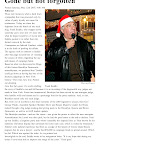

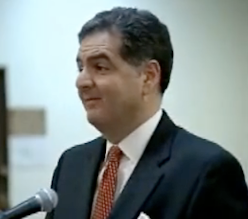
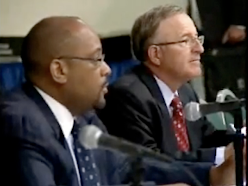
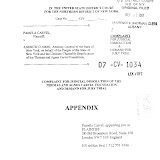

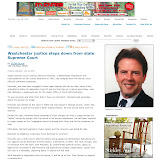
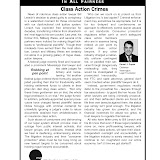

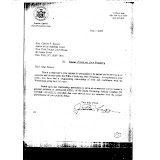
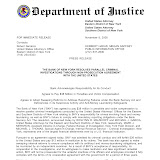
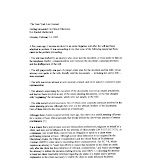
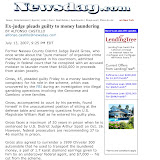
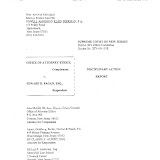
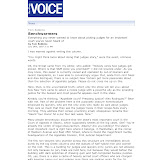
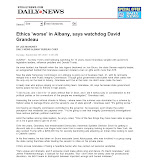
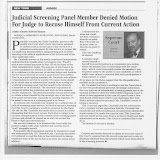



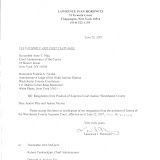
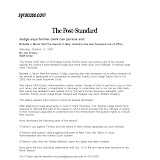
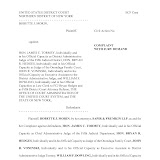

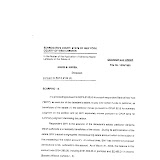
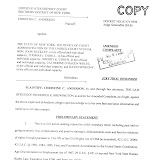
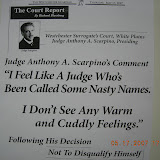
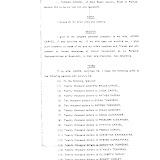
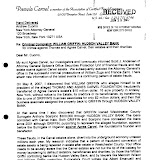
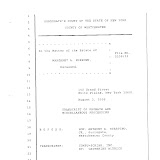
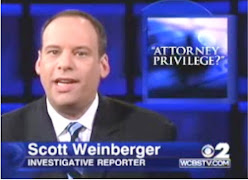
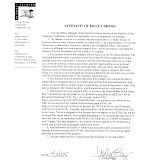
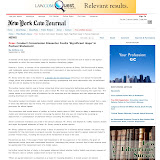
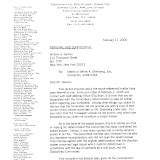
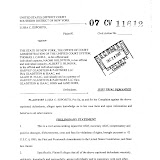
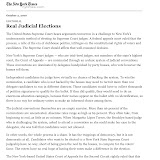
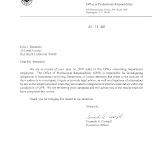
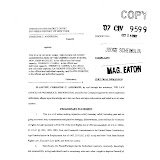
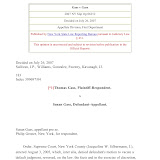
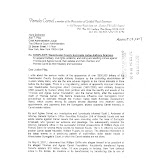

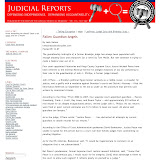
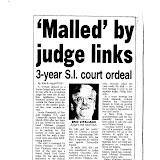
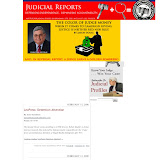
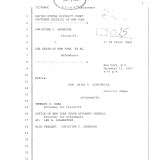
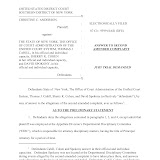
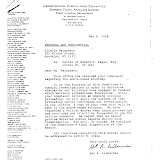
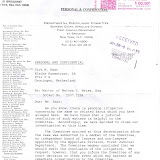
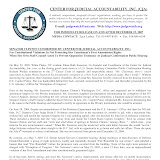


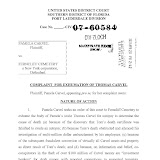
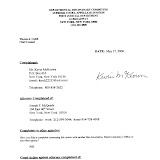
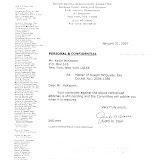
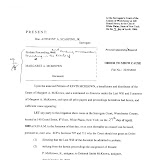
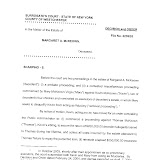
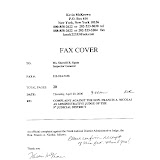

4 comments:
this attorney should not have a law license to practice anything including law. And the so-called law firm should be put out of business Stat! And give all of them BIG monetary sanctions Stat!
One show trial to fool the suckers who want to believe our system is honest. Sacrifice one vermin and let the multitude of crooked lawyers run free.
A great Weinstein Shelley company profile can engage and attract the right customers or supporters for a business, or it can bore them to sleep driving them to your competitors which are easily goggled in seconds.
A great Weinstein Shelley company profile can engage and attract the right customers or supporters for a business, or it can bore them to sleep driving them to your competitors which are easily goggled in seconds.
Post a Comment